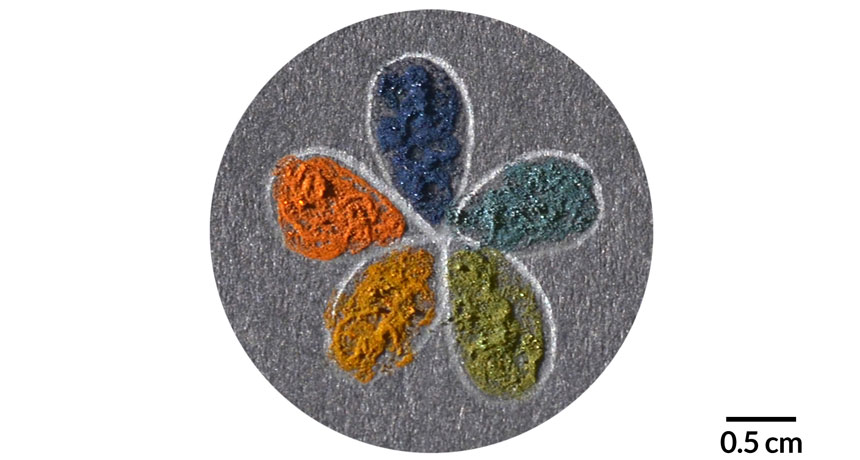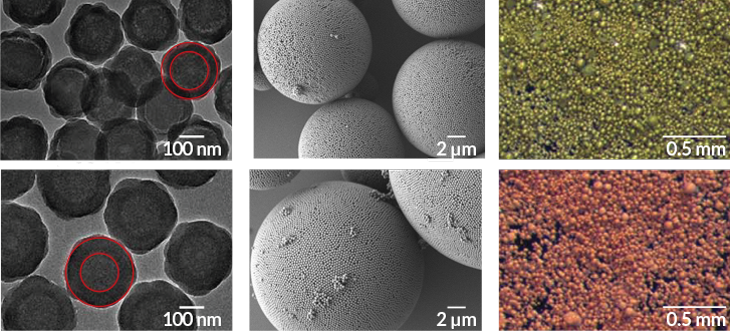Tiny ‘supraballs’ put a new spin on creating long-lasting color
Composed of a melanin core and silica shell, the particles get their hues from tricks of light

TO DYE FOR By changing the spacing between nanoparticles aggregated into balls, researchers created these inks of five different colors.
Ming Xiao/Univ. of Akron








